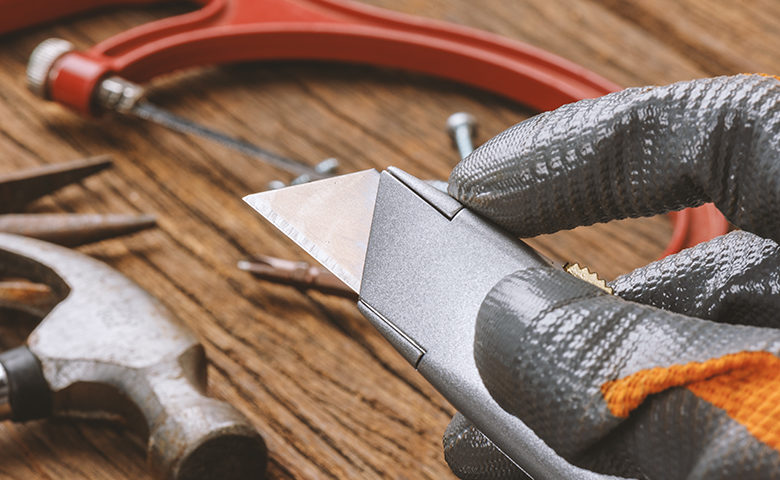Utility knives are one of the most common tools in the workplace and in household tool boxes. Often, they can be spotted peeking out of the pockets of contractors, DIYers, warehouse employees and even teenage shop assistants.
Utility knives are specifically designed to cut through various thick materials in a single slice and their potential for causing serious harm means that they need to be handled with care and that training on utility knife safety is essential. Over a thousand people are treated each day for injuries related to utility knives and almost 40 percent of manual workshop tool injuries involve knives with retractable blades.
Although knives are simple tools—or maybe because they seem so simple—they tend to be used incorrectly. These basic rules can prevent many, if not all, of the most common injuries related to utility knives.
- Wear gloves and safety glasses.
- Use a knife with a shielded blade surface.
- Make sure removable blades are installed correctly.
- Folding blades should be fully extended and locked before cutting.
- Make sure the blade is sharp—dull blades are more likely to slip.
- Ensure the cutting path is clear of other objects.
- Cut away from the body whenever possible or position yourself away from the cutting path.
- Don’t use the knife blade to pry anything loose—this can cause it to weaken and snap.
- Hand the utility knife to other people handle-first or put it down on a flat surface so that they can pick it up themselves.
- Work on the habit of sheathing the (fully retracted) blade after every use.
- When taking a break or talking to someone, don’t play with the knife. Put it down on a flat surface.
- Discard used blades safely—putting them in a secured and appropriately labeled container tends to be the safest option.
It’s also worth pointing out that using a utility knife as an all-purpose tool to save time is a bad idea. It might be tempting to pull the knife out of the pocket and use it as a screwdriver when going to find the right tool would take time. But saving a few minutes is not worth hours spent at the emergency room waiting for stitches or, worse, long surgery because of a knife injury.
Last but not least, it’s important to consider ergonomics when working with knives because repetitive motion can lead to various muscle and tendon problems. Dull knives can also cause more serious injuries because they require more force. This means that the user’s chance of joint and nerve damage increases due to much stronger repetitive motions. Taking regular breaks and stretching wrists and arms is something to keep in mind.
Knives are something we use every day and it’s easy to become complacent about safe knife handling. So keep the tips above in mind, stretch muscles to avoid strain, and take time whenever using a utility knife.

